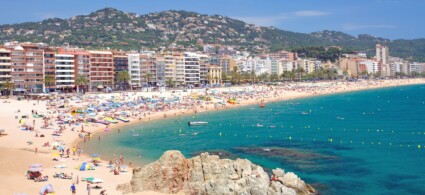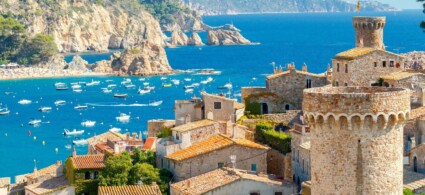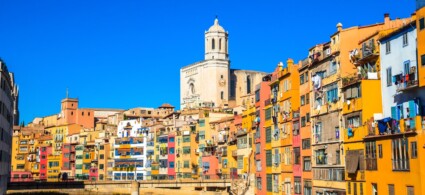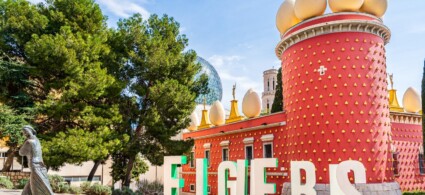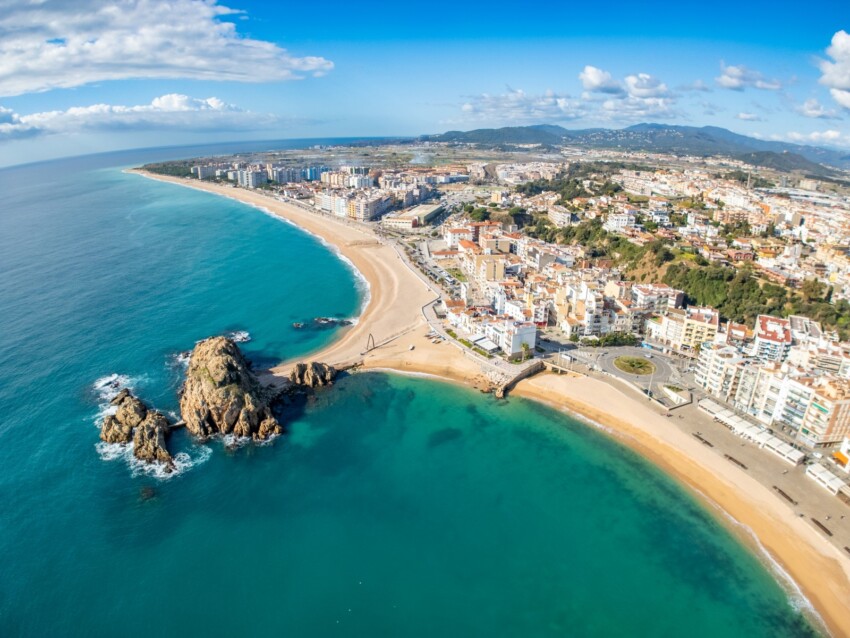

The Costa Brava is a Mediterranean coastal region in northern Spain, located within the province of Girona. It stretches from Blanes, 60 kilometres from Barcelona, to the French border. In the 1950s, with the approval of the Spanish government, the Costa Brava underwent a huge development in terms of tourism, with the construction of numerous hotels, residences and facilities to welcome holidaymakers from all over Europe, especially from the United Kingdom and France.
The combination of an almost perfect summer climate, unspoilt nature and excellent beaches has made the area one of the most touristically developed in the country. The Costa Brava is home to natural parks, beaches, traditional fishing villages, botanical gardens, museums and historical monuments, making it a truly complete destination, along with the many opportunities for entertainment offered by places like Lloret de Mar or Tossa de Mar.
The towns on the Costa Brava are actually small villages that have expanded in recent years with numerous hotels, flats, residences and tourism-related activities.
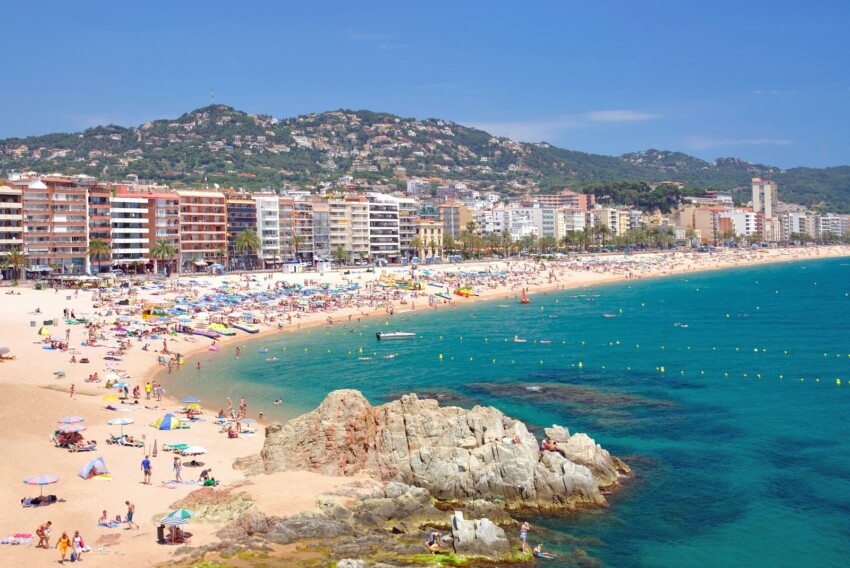
In Lloret de Mar, beach life revolves around its five main beaches, all of which have been awarded Blue Flag status. The 1.5 km long Platja de Lloret is the beating heart of the resort with all kinds of services and water sports. The more secluded Platja de Fenals and Cala Boadella offer crystal-clear waters and a more relaxed ambience, while Sa Caleta and Platja de Santa Cristina are small natural gems ideal for snorkelling.
The resort has a wide range of accommodation, from all-inclusive resorts to tourist flats. The promenade is bustling with bars, restaurants and nightclubs, making it the entertainment capital of the Costa Brava, with some of the most competitive prices on the coast.
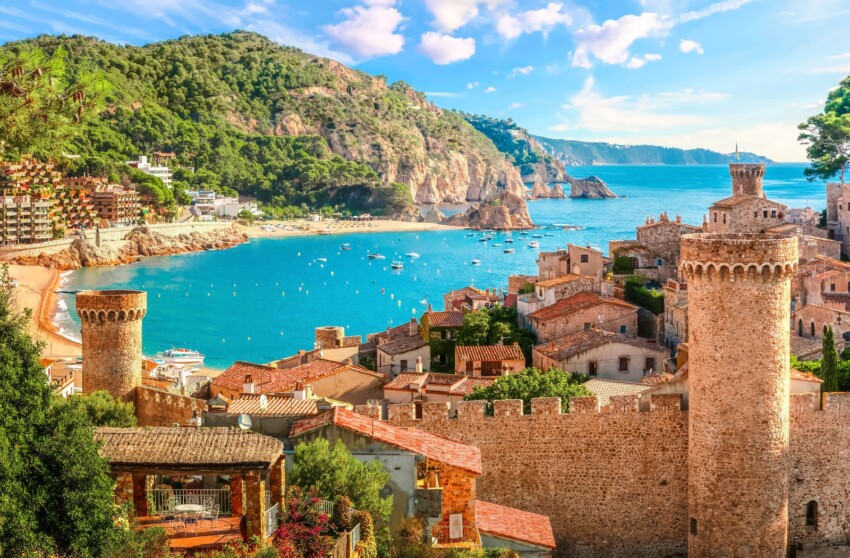
Tossa de Mar offers a spectacular main beach, Platja Gran, framed by medieval walls, with golden sand and shallow waters ideal for families. Mar Menuda and Cala Pola are more intimate coves with fish-rich depths, while beautiful coves that can only be reached by sea or on foot, such as Cala Bona and Cala Futadera, offer privacy and unspoilt nature.
The atmosphere is more refined than in Lloret, with quality tourism geared towards relaxation. Boutique hotels in old fishermen’s houses and beach resorts attract visitors seeking an authentic experience.
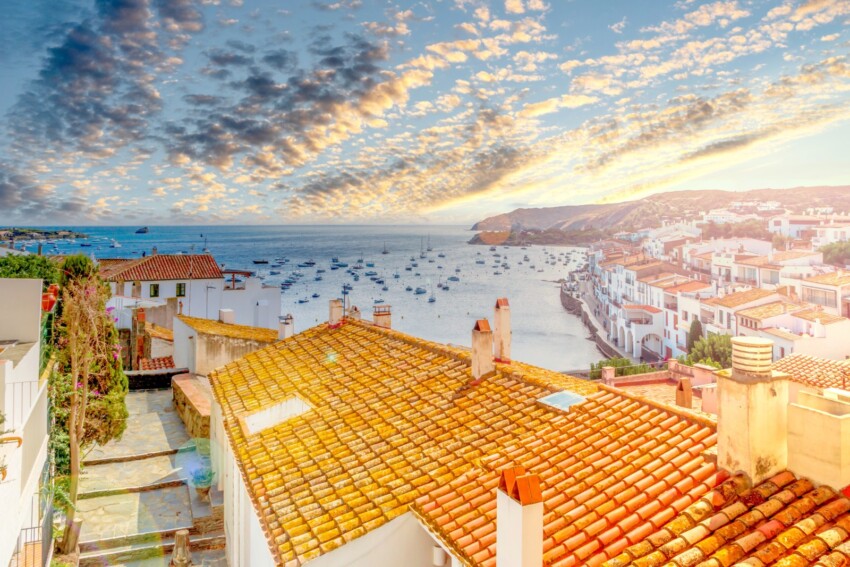
In Cadaqués, the main beach Es Llané Gran is characterised by pebbles, typical of this rocky area. The real gems are the numerous hidden coves such as Sa Conca, Ses Oliveres and Portlligat, accessible on foot via scenic paths. Es Ros and S’Alqueria offer crystal-clear waters perfect for snorkelling.
The atmosphere is bohemian and sophisticated, with higher-than-average prices. Hotels are small and quaint, often housed in traditional houses, while harbour-side restaurants serve excellent local fish.
North of Cadaqués is Cap de Creus: the landscape of this beach inspired Salvador Dali, whose Port Lligat house is just a few steps from the sea. The water is turquoise and the rocks form natural pools. It is located at the easternmost point of Spain.
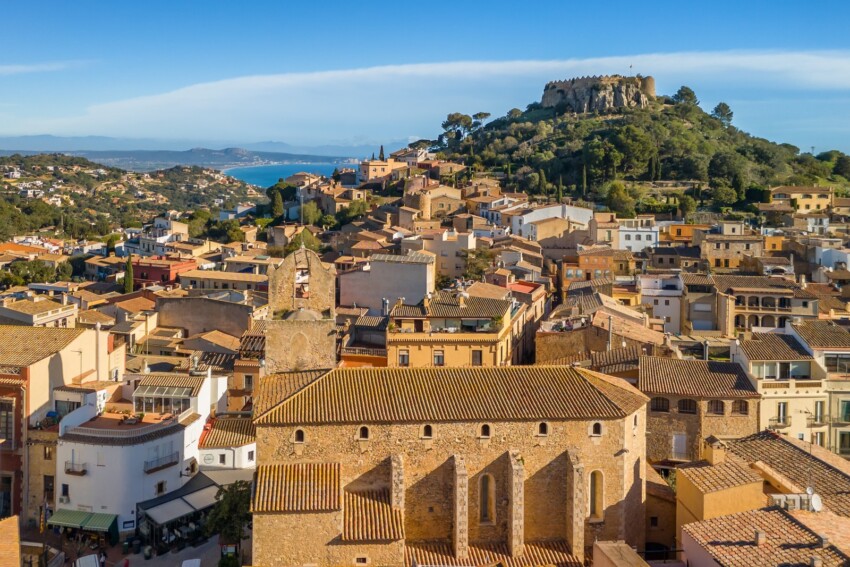
Begur is renowned for some of the most beautiful coves on the Costa Brava, each with its own distinctive character. Sa Riera offers a long sandy beach with full facilities, while Aiguablava is a perfect bay with turquoise water. Sa Tuna and Fornells are little jewels set among the rocks, and the wilder Aigüafreda and Platja Fonda are natural paradises for those who are not afraid of a few steps. A little further south of Begur is the beach of Tamariu: it is ideal for families and is not yet very developed and there are also excellent restaurants on the beach where you can enjoy fresh fish.
Tourism in Begur is characterised by an elegant and reserved atmosphere, with private villas and charming hotels. Prices are among the highest on the coast but quality is guaranteed, from gourmet restaurants to lounge bars with sea views.
Blanes welcomes visitors with S’Abanell, one of the longest beaches on the Costa Brava, stretching over 2 kilometres with all kinds of services and sports. Platja de Blanes is ideal for families with its shallow water and fine sand, while Sant Francesc and Cala Bona are quieter coves with spectacular views of the coast.
The resort offers excellent value for money in its accommodation, from hotels to campsites. The nightlife is lively but not excessive, and the promenade offers numerous seafood restaurants at reasonable prices.
L’Escala stands out for its beaches to suit all needs: Platja de Riells is a long sandy stretch perfect for families, while Cala Montgó is a sheltered bay with calm waters and shallow waters. The beaches of Portitxol and Illa Mateua are snorkelling havens, and the area of Empúries combines golden sand and historical charm.
The resort maintains a quiet, family-friendly atmosphere, with a predominance of tourist flats and quality camping. Prices are moderate and the gastronomy excellent, especially for those who love fish and the famous local anchovies.
Roses opens onto a spectacular bay with the majestic Platja de Roses, immense and ideal for long walks and water sports. Canyelles and Almadrava are wide beaches with golden sand and full facilities, while the wild coves of Montjoi, Murtra and Rustella in the Natural Park offer breathtaking scenery.
Platja de la Punta is a windsurfer’s paradise. The resort offers a wide choice of accommodation for all budgets, and the seaside promenade is bustling with restaurants and bars serving excellent local fish.
A little further south of Roses, Platja de Empuriabrava is a Blue Flag beach, one of the largest on the Costa Brava and at the same time one of the windiest.
Palamós holds some of the Costa Brava’s most authentic beaches. La Platja Gran is a wide stretch of golden sand with every comfort, while La Fosca is a sheltered bay with calm waters, perfect for families. Cala Margarida and Cap Gros seduce with their crystal-clear waters, and the Castell area preserves one of the last virgin beaches on the coast.
The town retains its soul of a seaside village, offering reasonably priced hotels and flats. The atmosphere is more authentic and less touristy than elsewhere, and the harbour-side restaurants attract gourmets from all over the region to sample the famous local red shrimp.
Sant Feliu de Guixols offers a perfectly protected bay with one of the most welcoming urban beaches on the Costa Brava. The Platja de Sant Feliu stretches for over 800 metres with golden sand and calm waters, ideal for families with children. The coves of Port Salvi and Cala Vigatà are small paradises that can be reached via the Camí de Ronda, while Sant Pol, a few minutes from the centre, surprises with its elegant atmosphere and fine sand.
Between Sant Feliu de Guixols and S’Agarò is the small Sa Caleta: it is a beach only 15 metres long and 5 metres wide, and its undisputed symbol is the magnificent medieval castle built on the cliffs overlooking the beach.
The town retains a Catalan authenticity that sets it apart from the more touristy resorts, with an offer of moderately priced flats and family hotels. The seafront promenade and the old town are home to excellent seafood restaurants and traditional eateries, while the municipal market is a focal point for local gastronomy.
In the following map you can see the location of the main places of interest mentioned in this article.
The Costa Brava allows everyone to experience the ideal holiday. Therefore, choose the area where you will sleep based on your desires. Want to enjoy the nightlife? Head for Lloret de Mar without hesitation. Looking for a more inward-looking and relaxed environment? Aim for Blanes in the south, or Tossa de Mar or Palamòs further north.
Whatever your destination, know that in Costa Brava you will find accommodation for all tastes: from five-star beach resorts to small flats in historic centres. In between, a plethora of hotels, aparthotels, residences and bed and breakfasts await you. Choose carefully based on your budget and the type of holiday you want to take.
The Costa Brava has an ‘official’ gateway: it is Girona airport, a historic Ryanair stronghold. Although long gone are the days when it recorded some 5-6 million passengers a year, due to the company’s internal policies that shifted much of its traffic to Barcelona International Airport, it is still an excellent arrival base.
As an alternative to Girona airport, always consider Barcelona airport: with a rental car you can get to the Costa Brava in 40-70 minutes, depending of course on where you have chosen to stay.
If, on the other hand, you are already in Spain and want to reach the seaside resorts of the Costa Brava, rely on the clean and punctual buses combined with the Spanish high-speed trains (AVE), which stop at the Girona and Figueres stations. Once off the train, in both cities practically on the opposite side of the train station is the bus station, from where buses leave at numerous times of the day for all major coastal resorts.
The Costa Brava represents the northern coastal stretch of Catalonia, i.e. the one that runs from the French border roughly all the way to Barcelona, although the southern border is never perfectly defined.
